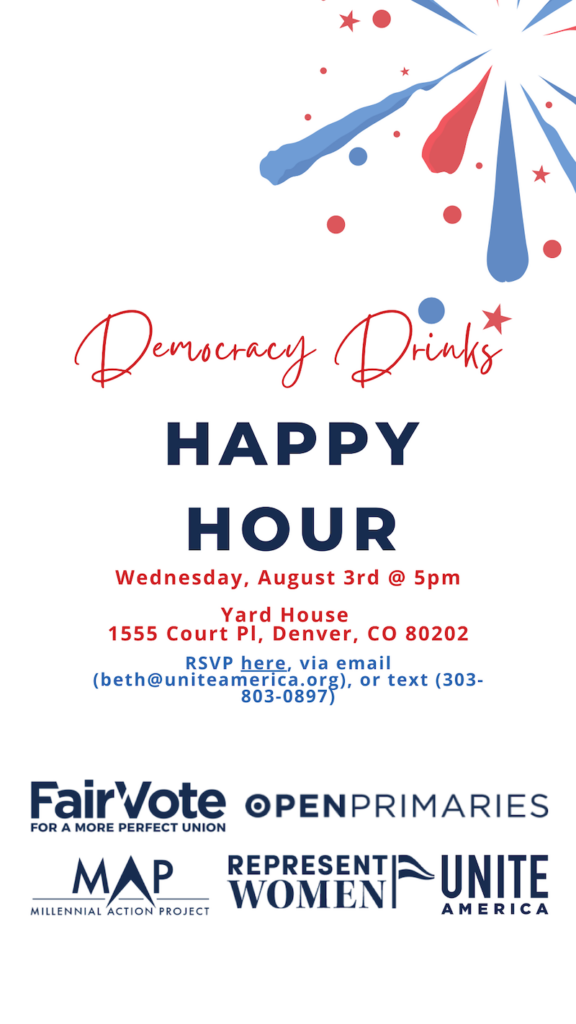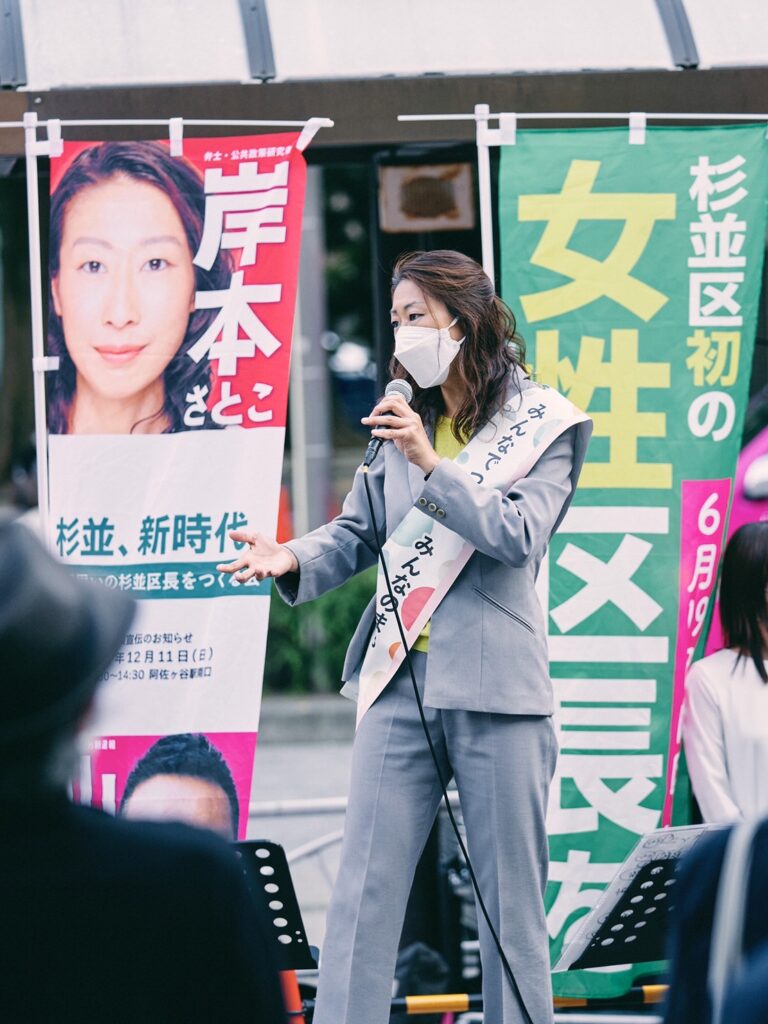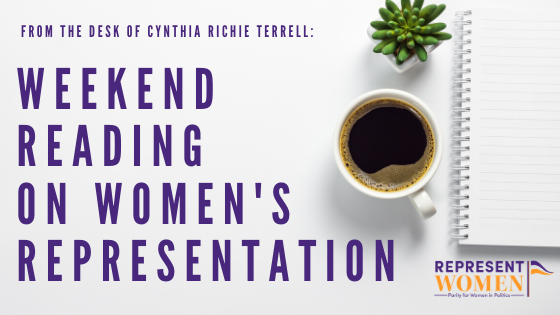
Weekend Reading on Women’s Representation is a compilation of stories about women’s representation in politics, on boards, in sports and entertainment, in judicial offices and in the private sector in the U.S. and around the world—with a little gardening and goodwill mixed in for refreshment!
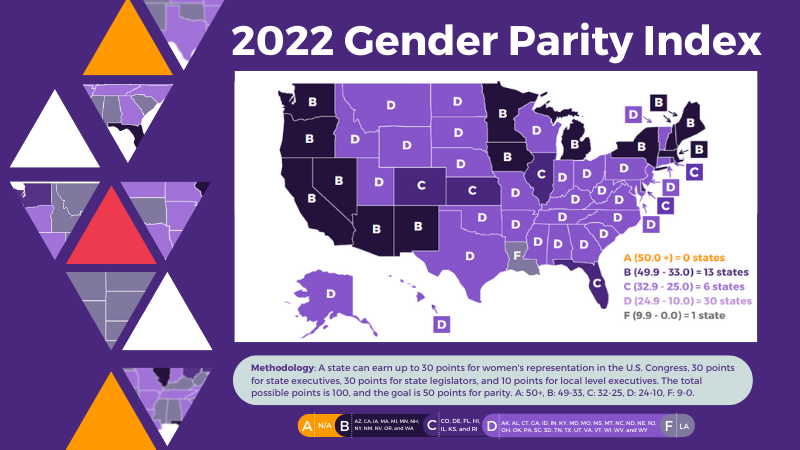
Many thanks to RepresentWomen research director Courtney Lamendola who worked with her terrific team to release the 2022 Gender Parity Index this week. While women’s representation has increased since last year’s report, most states still get a “D”—no state gets an “A”—and the current pace of progress is too slow to reach gender balance in politics in our lifetimes:
Nine years ago, RepresentWomen (then Representation2020) developed the Gender Parity Index (GPI) to help researchers and advocates rate progress towards gender-balanced governance in the United States. Each year, a Gender Parity Score is calculated for each of the 50 states and the U.S. as a whole. This score measures women’s representation at the national, state, and local levels of government on a scale of 0 (if there are no women in office) to 100 (if there are women in every office). Grades are then assigned according to a state’s proximity to parity (50/100).
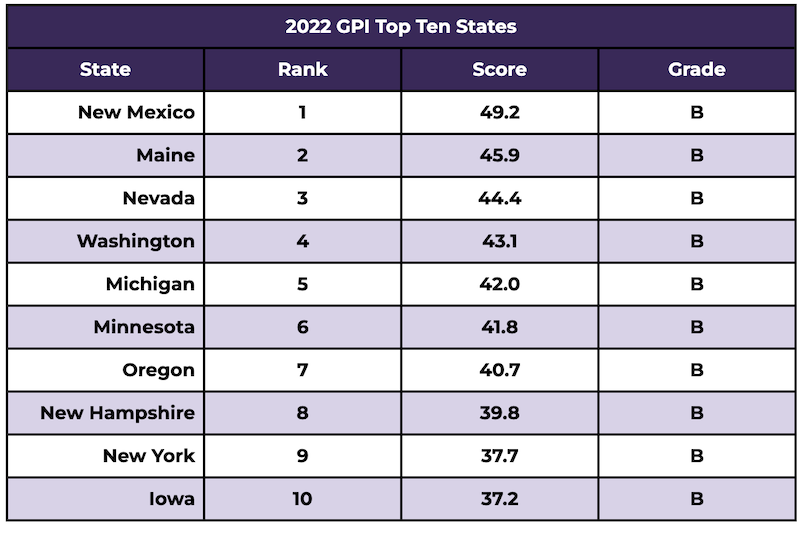
The Gender Parity Index is a measurement and evaluation tool that enables us to track outcomes for women in politics and make comparisons between states. One of the key takeaways from this exercise is that progress towards gender-balance is slower than it appears. Though it is true that women’s representation has increased over time, the Gender Parity Index shows that 1) not every state is on an upward trajectory towards parity, and 2) women remain underrepresented at every level of government, despite record progress.

At RepresentWomen, we use the Gender Parity Index to demonstrate the need for systems strategies that can improve women’s representation in politics. Our research shows that there are systemic barriers that make it more difficult for women to enter politics and limit progress towards parity in every state. Existing strategies that focus on preparing individual women to run for office are not enough to mitigate these barriers on their own. Complementary systems strategies are needed to address the systemic barriers that hinder women at every stage of the electoral process.
Gender Quotas Driving Increase in Women’s Representation Around the Globe
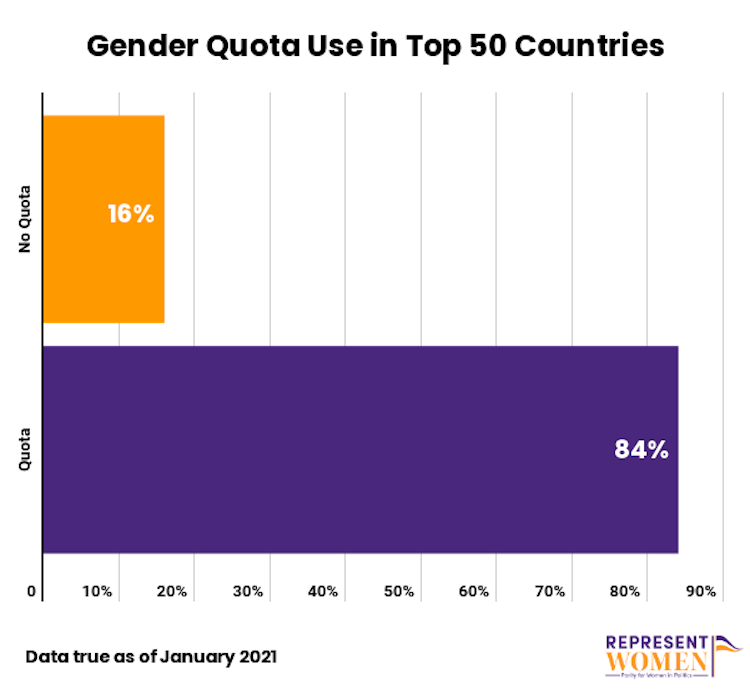
After reading the Gender Parity Index report, you may be wondering what’s working around the globe to increase percentages of women in office. Noted expert Jennifer Piscopo has the answer. Piscopo writes this week about the impact of gender quotas, which are the most effective tool to increase women’s representation:
The Prime Minister may boast about his gender-equal federal Cabinet, but Canada is tumbling down the global rankings for women’s representation in parliament.
Women hold only 30 percent of seats in the House of Commons, and Canada ranks (as of June 2022) a mere 58th of 185 countries with active parliaments, sandwiched between Zimbabwe at 57 and Viet Nam at 59.
Canada started the millennium ranked 27.
Progress then slowed and other countries pulled ahead. Countries like Mexico, Argentina, France, Spain and Belgium all outrank Canada, electing over 40 per cent women. The secret to their success? Laws that require political parties to run specified proportions of women.
These statutory gender quotas are found in over 80 countries, making Canada an outlier. And the success of quotas in countries like Mexico — that have strong parties and single-member districts — handily contradicts arguments that quotas are incompatible with Canada’s political system.
It’s time Canada got with the program and adopted gender parity for parliament.
Quota laws set different minimum percentages for women candidates, but the current state-of-the-art is gender parity — meaning gender-balance or 50 per cent women and 50 percent men.
The European Union considers gender parity a matter of fairness and democracy. So do all 33 Latin American and Caribbean governments, who committed to gender parity in the 2007 Quito Consensus.
The reasoning — echoed by feminist activists across the globe — is that governments and policies cannot be representative without including men and women in equal numbers. Indeed, voters perceive gender-balanced decision-making bodies as more trustworthy and more legitimate than those dominated by men.
‘Women in the C-Suite Is Key to Having More Women Ascend to the CEO Ranks’
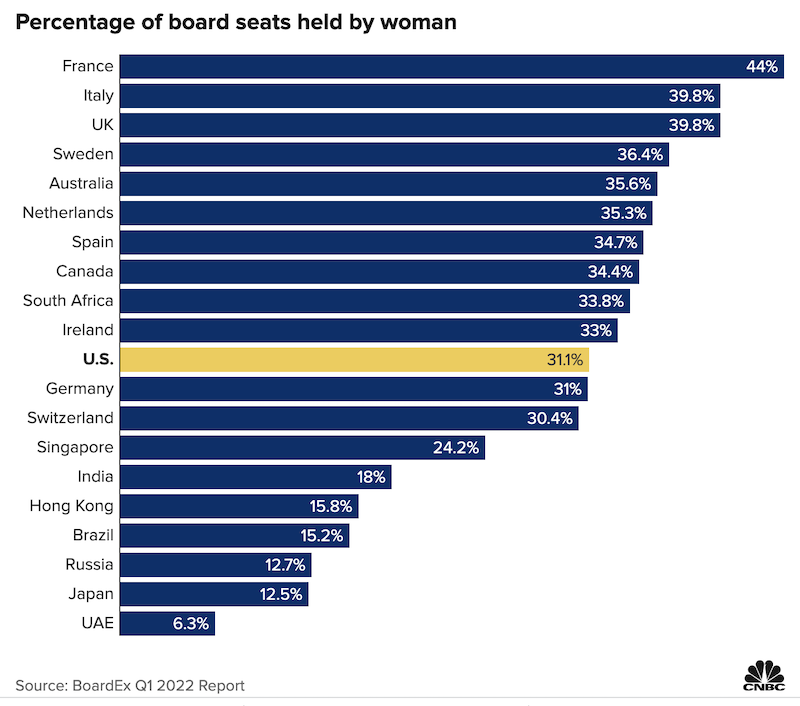
Women CEOs create more opportunities for women who are climbing up the corporate ranks according to Christina Cheddar Berk who writes about a new report on Global Gender Diversity. This analysis aligns with RepresentWomen’s report on Gender Balance on Cabinets that finds that women governors are more likely to appoint women to their cabinets than their male counterparts:
If you want to take a good guess at a company’s gender diversity record, you might want to first look at who its CEO or board chair is, according to the findings of a new study.
Having a female CEO at the helm of a company or chairing its board tends to make a huge difference, Altrata’s latest Global Gender Diversity report said Thursday.
The report examined BoardEx data to study female representation on the boards and leadership teams of 1,677 publicly traded companies in 20 countries as of the first quarter of this year.
It found that female representation on boards and in executive suites remains woefully low. And women who occupy roles on corporate boards often do not hold the most powerful positions….
But having a woman at the top can ripple throughout the organization. Of the companies studied, U.S.-listed Organon had the highest proportion of female board members, while Singapore-based CapitaLand Integrated Commercial Trust tops the global list for corporate leadership.
Work for Gender Equity Inextricably Linked to Health of Planet

A team of authors wrote a compelling piece for the Harvard Business Review about the vital connection between the work for gender equity and the work to address climate change:
As the climate crisis becomes increasingly urgent, organizations around the world have begun investing in a wide array of environmental sustainability initiatives. Some of these efforts target technological solutions, while others prioritize behavioral or economic changes, but what the vast majority have in common is a single-minded focus on reducing carbon emissions. And to be sure, this is an important goal — but a growing body of research suggests that real progress on environmental sustainability requires solutions that also incorporate social sustainability, and in particular, gender equity.
What does gender have to do with environmental sustainability? These two issues may seem unrelated, but they are in fact closely intertwined. Indeed, a comprehensive report from United Nations (UN) Women found that women are disproportionately impacted by most if not all of the challenges highlighted in the UN’s Sustainable Development Goals (SDGs). For example, natural disasters (which have become more common due to the climate crisis) often disproportionately affect women, children, the poor, the elderly, and the disabled, whose perspectives often go unheard or ignored. Women and girls in many regions in the Global South are typically responsible for collecting water, which becomes a lot more taxing during droughts, and in Europe, women are more likely than men to live in flood zones, where the impact of climate change is felt most severely. Studies have also shown that gender-based violence, including physical, psychological, and reproductive violence against women, becomes more prevalent after natural disasters, with complex and far-reaching consequences on health and well-being.
In addition, many policies and initiatives designed to address environmental issues do so while ignoring or even actively harming women and other underserved groups. For example, women and poorer households tend to be affected more negatively by environmental policies such as expansions of public transport, carbon pricing, and taxes, because these policies often overlook the needs of women and underserved groups (e.g., by optimizing public transit for traditional 9-to-5 commutes rather than school pickup routes, or by increasing the prices of goods on which women and families rely). Similarly, in one case, climate-driven efforts to install “clean” cooking stoves were discontinued when organizers realized their impact on emissions was smaller than initially expected, disregarding the unexpected positive byproduct that these stoves improved women’s and children’s health and safety…
The good news is, while women are especially vulnerable in this climate crisis, they are also uniquely positioned to act as powerful agents of change. On average, women have smaller carbon footprints than men, more-responsible attitudes towards climate change, and greater interest in protecting the environment, with notable examples including activist Greta Thunberg, primatologist Jane Goodall, and consumer advocate Erin Brockovich. Female leaders are already tackling the climate crisis from the grassroots up to the top levels of the corporate world, with studies showing that organizations with more female executives and board members have better performance in terms of both environmental impact and broad corporate social responsibility (CSR) goals. Indeed, research has identified a distinct female leadership advantage: Women have been demonstrated to be more effective leaders both in normal times and during crises such as the Covid-19 pandemic (in the U.S. and across 91 countries), and the data suggests this advantage extends to the climate crisis as well.
Youth Voting Rights Act Is Key to Enfranchising Young (Women) Voters

Leading voting rights attorney Yael Bromberg writes a powerful piece in Teen Vogue about the importance of the Youth Voting Rights Act that is an essential component of a package of reforms to protect and enhance the voting rights of young people:
The Youth Voting Rights Act: 1) establishes a national standard of review for 26th Amendment legal challenges; 2) expands voter registration services at public colleges and universities; 3) allows young people in every state to preregister to vote before turning 18; 4) requires institutions of higher education to have on-campus polling places, with waivers available as appropriate; 5) codifies the right to vote from a college address; 6) guarantees that states accept student IDs to meet voter-identification requirements; 7) creates a grant program that supports youth involvement in elections, including paid fellowships for young people to work with state and local election administrators to engage their peers; and 8) gathers data on registration and voting based on age and race.
The bill is endorsed by a wide range of democracy and youth organizations and cosponsored by leading voices in the Senate and House. Through my work engaging young people across the country in organizing, education, advocacy, research, and scholarship — and litigation when necessary — I hear about how they are systematically forced to use provisional ballots in successive elections based on issues related to their voter registration and voter confusion; how they need to travel far off campus to vote, sometimes taking multiple buses and hours-long trips; how they cannot meet identification requirements because they are from out-of-state or do not have a driver’s license, but often use the most widely available form of identification they have, a student identification card….
The Youth Voting Rights Act takes the best of the American village: empowering young people to write the future they will inherit, with multigenerational support. This is the country we should aspire to be.
First Woman Mayor Elected in Tokyo
Women’s Agenda staff writer Brianna Boecker reports on the first woman mayor of Tokyo, Satoko Kishimoto, and her commitment to challenging traditional male leadership:
Satoko Kishimoto is Tokyo ward’s first female mayor and she’s determined to bring ‘radical change’ to Japan’s long history of male-dominated politics.
Last month, Kishimoto was elected mayor of Suginami ward in Tokyo, becoming the first female leader in its 90-year history. In a country with low levels of female representation, Kishimoto said she decided to run for office to “promote democracy” and to champion causes close to her heart, such as labour rights and the environment.
“When I looked at Suginami and what local people faced there in terms of public services, childcare and urban planning, I thought something had to change and I believed I could do something with them and for them.”
Prior to running for mayor, the 47-year-old Kishimoto worked for 25 years as an environmental activist at Transnational Institute, a Dutch research organisation. She recently returned to Japan after a decade living in Belgium with her husband and two children. Despite her political opponents’ criticisms of her Belgian residency, she’s maintained such strong ties with Japan that this didn’t seem to sway most voters.
Women Underrepresented in World of Art
I found this short piece by Emma Shapiro in The Art Newsletter that explores the presence of women artists at MoMA (which has a great new exhibit by Barbara Kruger). It was a timely reminder that women face similar barriers across all disciplines and sectors, and to paraphrase Frederick Douglass, that imbalance won’t change “without a demand.”
Idly scrolling through Instagram, I pause when I see Sex and the City’s Charlotte circa-2002 beaming out at me. “Welcome to the Museum of Modern Art,” she declares in the caption, “Did you know that here at MoMA, less than 10% of the work is by women artists? And even fewer are by women of colour?” As I try to remember her chipper voice delivering this startling fact, I scroll to the accompanying text from Art Girl Rising, an activist organisation that fights for women’s representation in the art world. About Charlotte’s 2002 factoid, the text tells me: “That was 20 years ago. TWENTY. The numbers haven’t budged much since then!” I find myself staring, lost in worried thought. Have things really not changed in 20 years? Or, rather, am I actually surprised?
Sadly, Charlotte never did boldly announce gender disparity in the middle of MoMA, in real life or on TV. Art Girl Rising simply used the familiar pop culture reference to capture the attention of Instagram users like myself and point us towards a very real, ongoing issue.
Upsettingly, the idea that, in 2002, 10% of MoMA’s collection was by women seems generous when in 2004’s re-hang of the permanent collection (with works spanning from 1879-1969), that number was closer to 5%. Jerry Saltz’s 2007 article Where Are All The Women? for New York magazine noted that the re-hang exhibited only 20 works by women out of 415 in 2004, and 19 out of 399 in 2006. Twelve years later, MoMA’s formerly abysmal representation of women rose to 23%— or 336 of 1,443 exhibited works. Apparent progress but still a deep divide, one that the art historian Maura Reilly described as “tokenism”. For ARTnews, Reilly framed the massive 2019 re-hang as both exciting but disappointing — the central characters continued to be the white men of always, with women and artists of colour in supporting roles.
FairVote Celebrates 30th Anniversary

This week we celebrated 30 years of FairVote – the organization my husband helped to found and directs. FairVote alum Steve Hill writes about the decades long movement for ranked choice voting while another FairVote alum, Caleb Kleppner, visited the Capitol whilst in DC to attend the unveiling of the statue of his great aunt Amelia Earhart who was a champion for the ERA and women’s equality – though that part of her amazing story rarely gets told.
Who Influences the Influencers?

Rob and I attended Washingtonian Magazine’s 500 Most Influential People in the DC area — he was honored and I got to emphasize to all who would listen that it’s those who influence the influencers who are the most influential!
That’s all for this week my friends,
Cynthia
P.S. Next week I will be in Denver for the National Conference of State Legislatures gathering – if you plan to be there too I hope you will come to Democracy Drinks – a happy hour hosted by RepresentWomen, FairVote, Unite America, Open Primaries, and The Millennial Action Project! You can RSVP here & please stop by the RepresentWomen table if you are at the conference!
